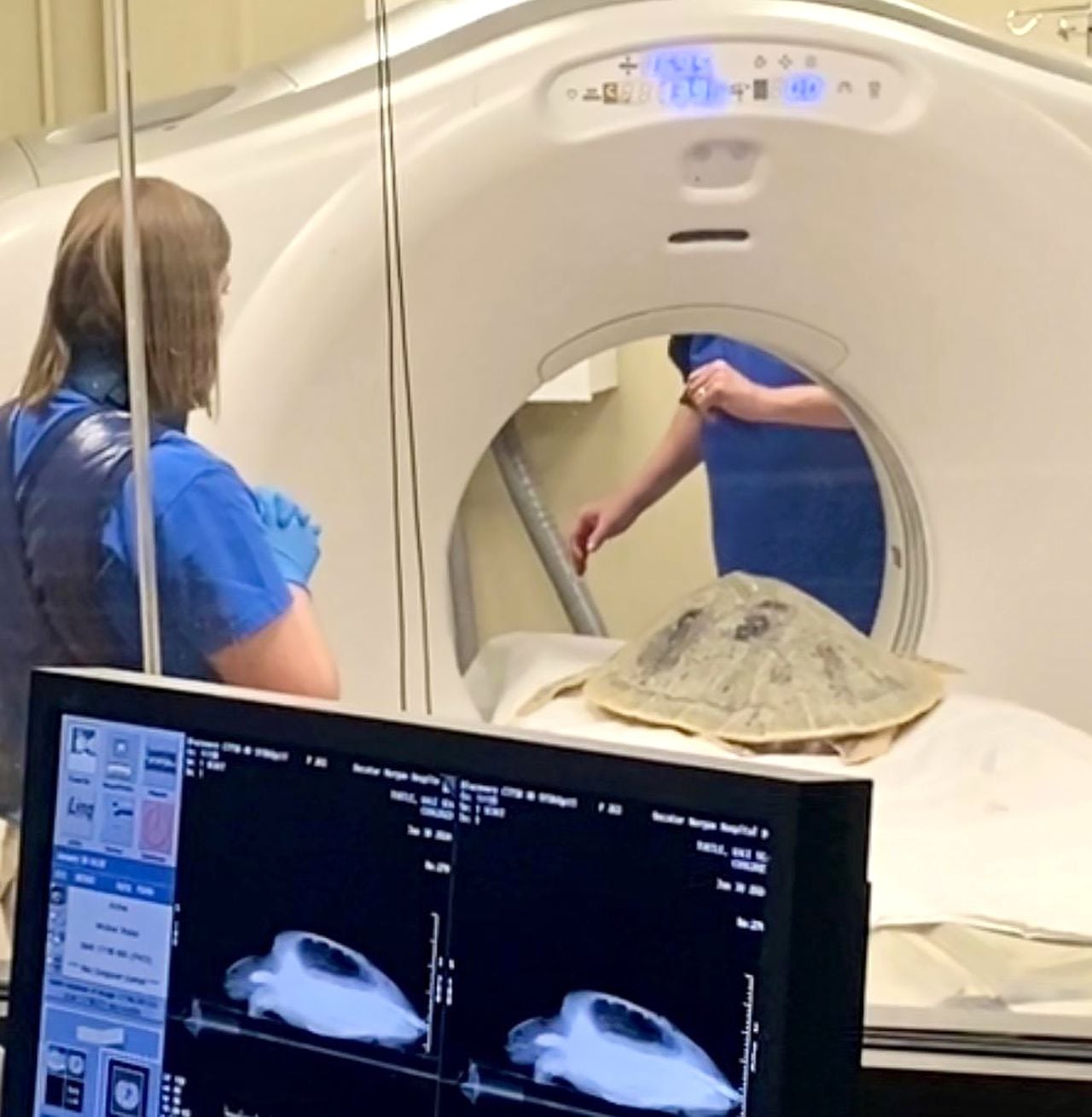Endangered turtle with shell infection gets second scan at Alabama hospital
An endangered sea turtle being treated for an infection in his shell at an Alabama natural science museum underwent his second CT scan Tuesday at Decatur Morgan Hospital, the museum announced.
Kale, a Kemp’s sea turtle being cared for at the Cook Museum of Natural Science in Decatur, had the scan to help his caretakers determine the status of his osteomyelitis, a bony infection in his carapace, or the top part of his shell.
Kale had his first scan at the north Alabama hospital in July, which helped Cook Museum veterinarian Dr. Christian Keller and the museum’s animal care staff establish a baseline for the turtle’s condition.
“This second scan will provide crucial insights into Kale’s status, enabling the team to tailor his treatment accordingly,” the museum said in a statement.
Kale came to the Museum from the Virginia Aquarium and Marine Science Center, a facility that rescues and rehabilitates sea turtles and other marine animals so they can be released back into the wild.
Kale, while still a juvenile, was hooked by a recreational fishman off a pier on Chesapeake Bay in Virginia in 2019. Due to the size of the hook, an endoscopic procedure could not remove the hook. Therefore, several invasive surgeries were required.
His wound did not fully heal and created scar tissue and a fistula, a hollow space where food and debris can get trapped and cause infections. Due to the fistula, Kale needs medical attention from time to time, making him a non-releasable sea turtle.
Kale has been with the Cook Museum since 2020. He came off display in January 2022 to address his medical condition.
He has since been cared for by the museum’s veterinarian team and animal care staff, who have spent more than 1,200 manhours helping him recover from the infection.
The team’s work includes monitoring the condition and giving Kale medications and treatment to help his osteomyelitis.
DOC Orthopaedics & Sports Medicine donated surgical supplies used in Kale’s treatment. These tools allowed Cook Museum staff to successfully remove portions of his carapace, pack those areas with antimicrobial material and protect them with bone cement to help Kale fight this infection.
The CT scans and treatments are just some of the steps in Kale’s hopeful return to the cceans tank at the museum.
“Reptiles are well known for being able to heal incredible injuries, but in general it takes them a longer time than warm-blooded animals,” Keller said. “Their temperatures are cooler, and they have slower metabolism, so it’s been a long time since anyone has been able to see Kale in the Exhibit. This CT scan will provide us with a quantitative measure of the healing that still needs to occur.”
Kemp’s ridley sea turtles have been protected under the Endangered Species Act since 1970, and they are currently listed as “critically endangered” by the International Union for Conservation of Nature (IUCN).
Kale is non-releasable, and he provides opportunities for public education and acts as an ambassador for his species, helping foster a connection between Museum visitors and nature. His care and conservation provide valuable scientific data and a better understanding of the species and its challenges.
